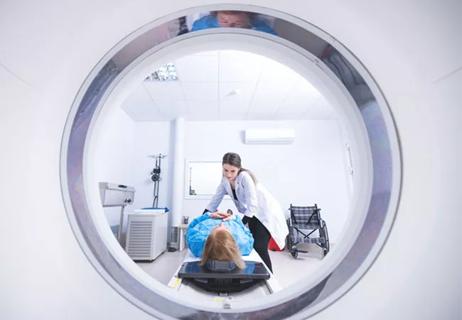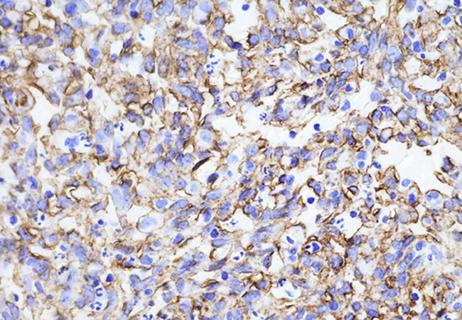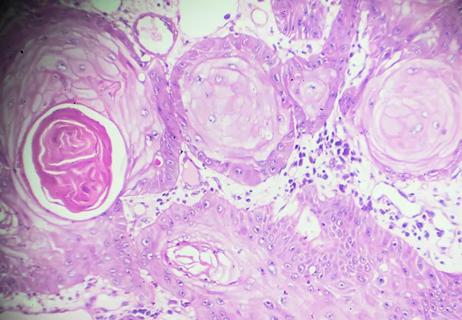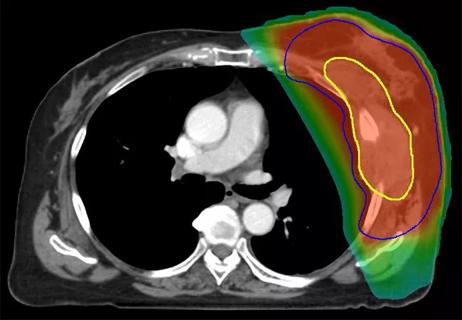Key abstracts highlight advances in treating locally advanced and refractory disease

Though radiotherapy remains a key part of treating many cancers, its role will continue to evolve as practitioners learn more about how best to employ this treatment. To that end, thousands of health care providers converged in San Antonio, Texas recently at the 2022 American Society for Radiation Oncology (ASTRO) meeting to stay ahead of this evolving field. Today, radiation oncologists from Cleveland Clinic Cancer Center are highlighting the ten below abstracts that stood out during the conference for their potential to enhance clinical practice.
Advertisement
Cleveland Clinic is a non-profit academic medical center. Advertising on our site helps support our mission. We do not endorse non-Cleveland Clinic products or services. Policy
In this randomized Phase III trial, 177 patients with locally-advanced hepatocellular carcinoma who were not candidates for resection, transplant, transarterial chemoembolization or ablation were randomized to sorafenib +/- stereotactic body radiation therapy (SBRT). Liver stereotactic body radiation therapy (SBRT) prolonged progression-free survival (from six to nine months) and overall survival (from 12.3 to 15.8 months) among patients with unresectable hepatocellular carcinoma receiving sorafenib, with no increase in treatment-related adverse events. The addition of liver SBRT to other systemic therapy regimens warrants further investigation given the observed benefits in this population.
In this Phase III trial with more than 2,000 patients, shortening treatment duration with hypofractionation and a concurrent boost did not result in inferior outcomes compared to standard whole breast irradiation with a sequential boost in terms of ipsilateral breast cancer recurrence (2.6% vs. 2.2%), grade 3+ toxicity (3.3% vs. 3.5%) or good to excellent cosmetic outcome (84% vs. 86%). This data indicates that patients with early-stage breast cancer requiring tumor bed boost will benefit from a shorter overall treatment duration.
In this Phase II prospective trial, patients with indolent orbital B-cell lymphoma were treated with ultra-low dose radiation (4 Gy in two fractions) in a response-adapted approach. Patients with persistent disease received an additional 20 Gy in 10 fractions. At a median follow-up of 35 months, 44 of 51 patients had a complete response to ultra-low dose radiation and one patient had a complete response after an additional 20 Gy. No local recurrence or grade 3+ toxicity was seen. Patients with indolent orbital B-cell lymphoma will benefit from this approach, as this provides a shorter treatment course and potential for reduced toxicity.
Advertisement
In this randomized Phase III trial, 770 patients with high-risk locally advanced cervical cancer were randomized to external beam radiation therapy with concurrent chemotherapy followed by brachytherapy with concurrent and adjuvant placebo versus radiation therapy with concurrent chemotherapy followed by brachytherapy with concurrent and adjuvant durvalumab. There was no significant difference in progression-free survival between the placebo and durvalumab groups (12-mo progression-free survival 73.3% placebo vs. 76% durvalumab; 24-mo progression-free survival 62.1% placebo vs. 65.9% durvalumab). Therefore, the study concluded no benefit to concurrent and adjuvant immunotherapy in locally advanced cervical cancer.
In an international multi-institutional analysis of 190 patients with medically inoperable, localized renal cell carcinoma with a median follow-up of five years, stereotactic ablative body radiotherapy (SABR) was found to be safe and effective. At baseline, 28% had eGFR<45. At five years post-SABR, there were mild decreases in eGFR, 37% experienced grade 1-2 toxicities and 5% of patients ultimately required dialysis. Cancer-specific survival five-years post-SABR was 92%, with local control approaching 95%. 43% of the cohort received single-fraction SABR (25-26 Gy) while the remaining 57% underwent multi-fraction regimens. Single-fraction SABR was associated with improved local efficacy and progression-free survival compared with multi-fraction regimens, and warrants further investigation.
Advertisement
In this randomized Phase II trial, patients with locoregionally advanced p16 positive and negative head and neck cancer with contraindication to cisplatin receiving radiation therapy with concurrent durvalumab did not demonstrate a progression-free survival benefit (51% vs. 66%, p=0.92) and experienced higher rates of locoregional failure (32% vs. 15%, p=0.04) compared to radiation therapy with concurrent cetuximab. Radiation with concurrent cetuximab remains the standard of care for cisplatin-ineligible patients with locally advanced head and neck cancer.
In this prospective Phase II randomized, multi-center trial, 78 polymetastatic patients with 122 asymptomatic-to-minimally symptomatic high-risk bone metastases were randomized to prophylactic radiation therapy vs. standard of care in a 1:1 fashion, with a primary outcome of skeletal-related events defined as fracture, cord compression or intervention with surgery or radiation. At one year, the radiation therapy arm had significantly fewer skeletal-related events (1.6% vs. 29%). The radiation therapy arm had significantly improved overall survival (1.67 yr vs. 0.99 yr). Patients with high-risk asymptomatic or minimally symptomatic bone metastases in the polymetastatic setting may experience clinically meaningful benefit to prophylactic radiation treatments.
In this prospective single-arm, single-institution study, ten patients with >two-month life expectancy and one to three painful bone metastases in the extremities were treated with 8 Gy in 1 Fx using FLASH radiotherapy, (>40 Gy/s) via a single transmission proton beam, based on preclinical studies that there may be significantly reduced normal tissue toxicity with this technique relative to conventional radiation therapy. The co-primary endpoints were feasibility and safety. This first-in-human trial demonstrated that FLASH proton radiotherapy was feasible with no FLASH-related technical issues. Adverse events were favorable and comparable to published literature for conventional dose rate photon treatments. This study supports further exploration of FLASH proton radiation treatments in humans.
Advertisement
Clinical and digital histopathology data from Phase III prostate cancer trials (RTOG 9202, 9408, 9413, 9910, 0126) showed multi-modal artificial intelligence could stratify patients into risk groups to more accurately reflect prognosis compared to NCCN stratification. 5,569 patients with median follow-up at 11.4 years were divided into three groups: favorable, moderate and unfavorable risk. The NCCN group had 584 (10%) low, 3,060 (55%) intermediate and 1,925 (35%) high-risk patients with ten-year distant metastases rates of 3%, 6% and 17%, respectively. The multi-modal artificial intelligence group had 3,342 (60%) favorable, 1,671 (30%) moderate and 556 (10%) unfavorable patients with ten-year distant metastases rates of 3%, 12% and 37%, respectively. The three-tier multi-modal artificial intelligence models integrating clinical and digital histopathology data demonstrated improved discrimination of distant metastases relative to NCCN risk groups.
This Phase III clinical trial enrolled 329 patients with high-risk prostate cancer who were randomized to hypofractionated radiotherapy (45 Gy in 25 fractions with a simultaneous integrated boost to 68 Gy) versus conventionally fractionated (46 Gy in 23 fractions with a 30 Gy in 15 fraction sequential boost) radiotherapy, along with 28 months of androgen deprivation therapy. With a median follow-up time of seven years, there were no differences in overall (81.7% hypofractionated vs. 82.0% conventionally fractionated, p=0.76), prostate-specific (94.9% vs. 96.4%, p=0.61), biochemical recurrence-free (87.4% vs. 85.1%, p=0.69) and distant recurrence-free survival (91.5% vs 91.8%, p=0.76). The simultaneous boost arm had a slight increase in acute grade ≥1 GI toxicity (odds ratio 1.76) and no increase in late toxicity. This study supports routine adoption of hypofractionated radiotherapy in the treatment of high-risk prostate cancer.
Advertisement
Advertisement

Correlation found between the biomarker HSD3B1 and resistance to combined hormone therapy and radiotherapy

Meta-analysis suggests efficacy and safety

Highlighting top abstracts for the annual radiation oncology conference

Transperineal ultrasound a viable, non-invasive option for monitoring intra-fractional prostate motion

Multidisciplinary team to examine radiation therapy combined with immunotherapy

Preoperative treatment ensures successful surgical resection

Modification of traditional staging factors associated with survival in high-risk disease

Hyperthermia, neoadjuvant chemoradiation and reconstruction hold promise of long-term survival